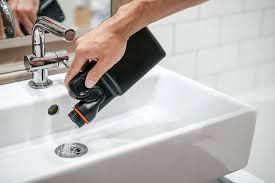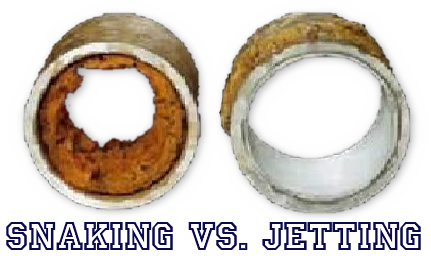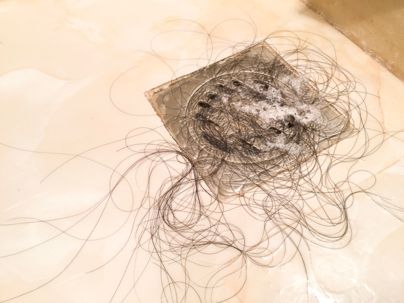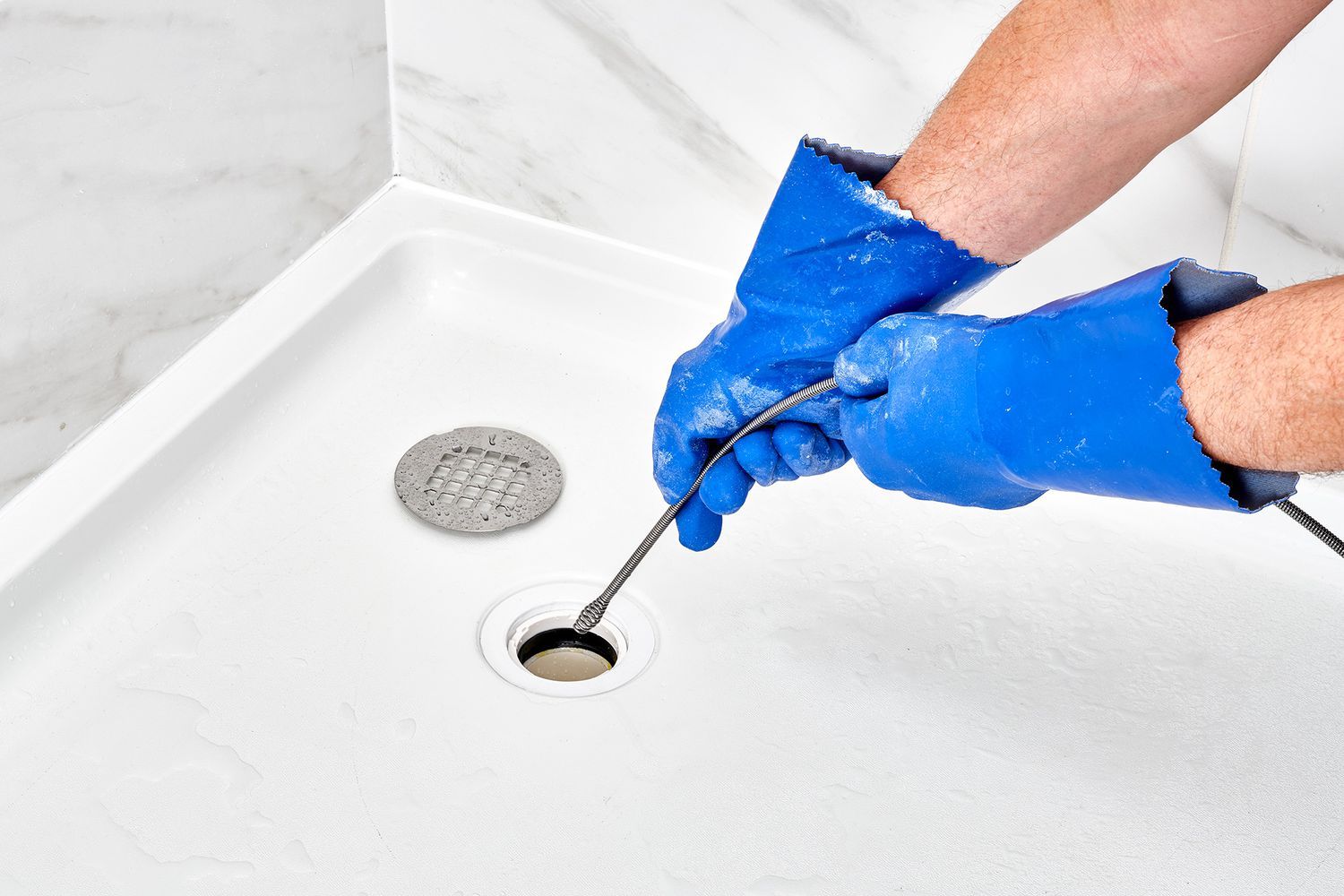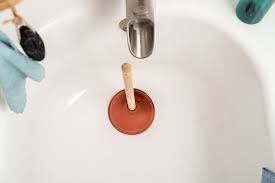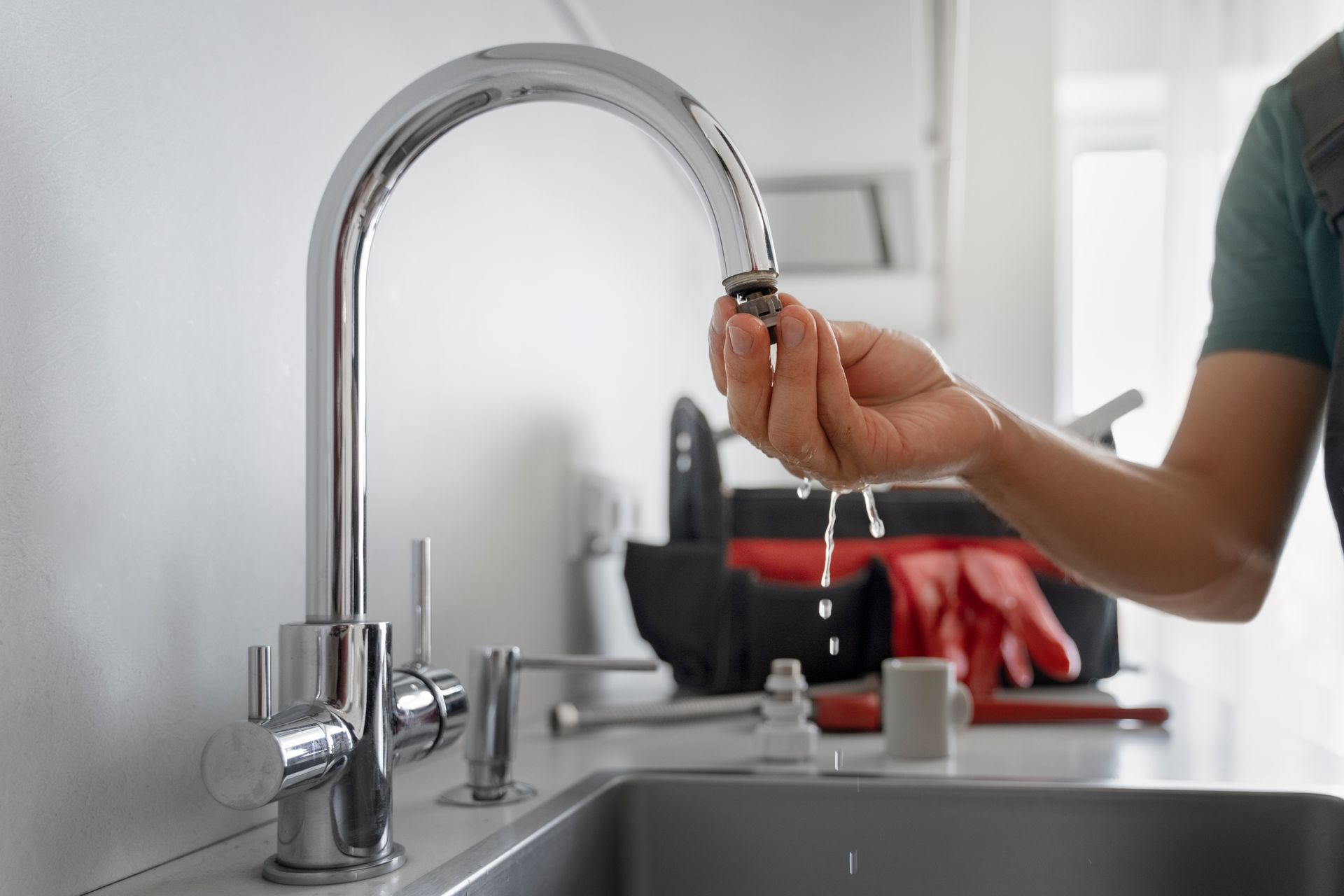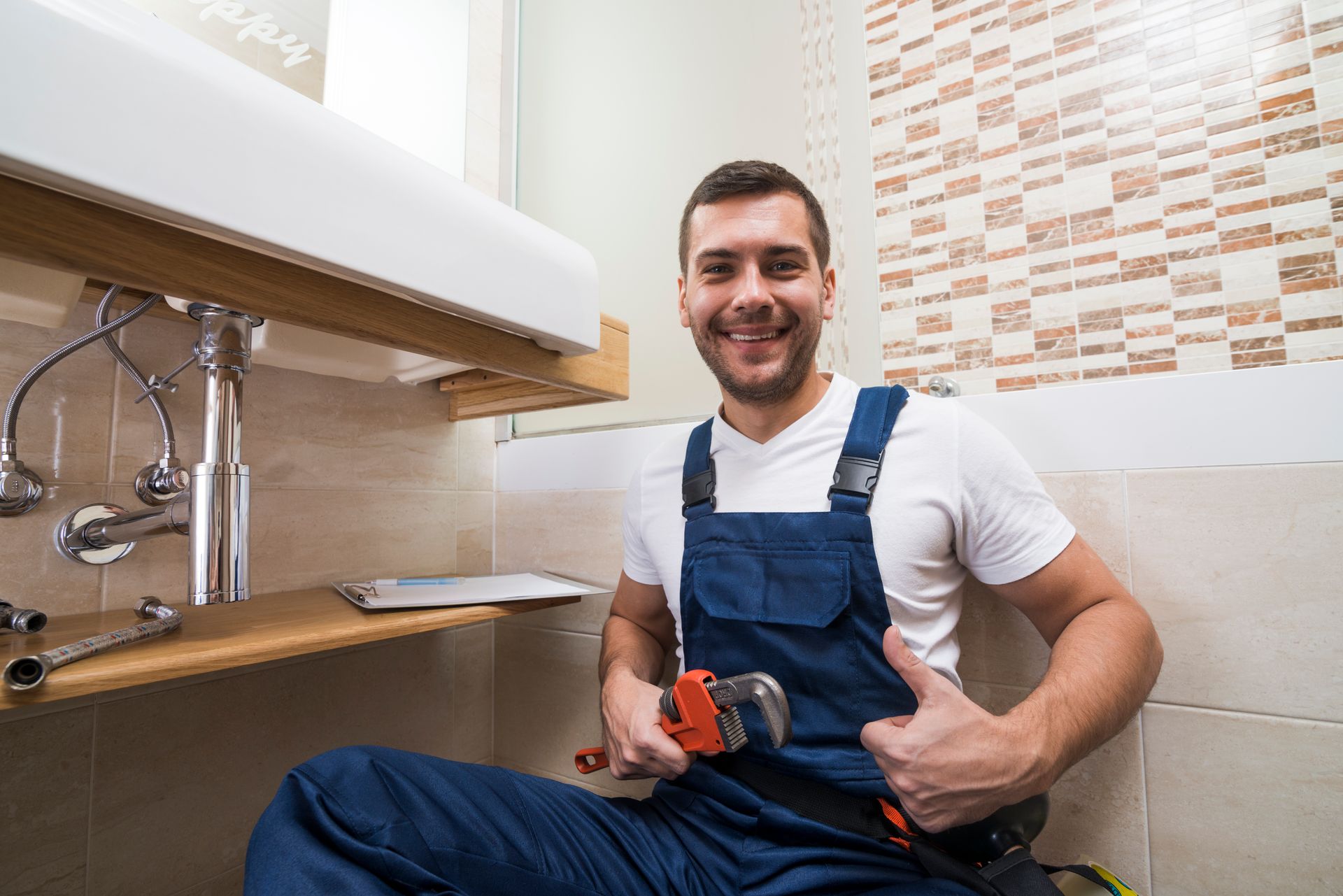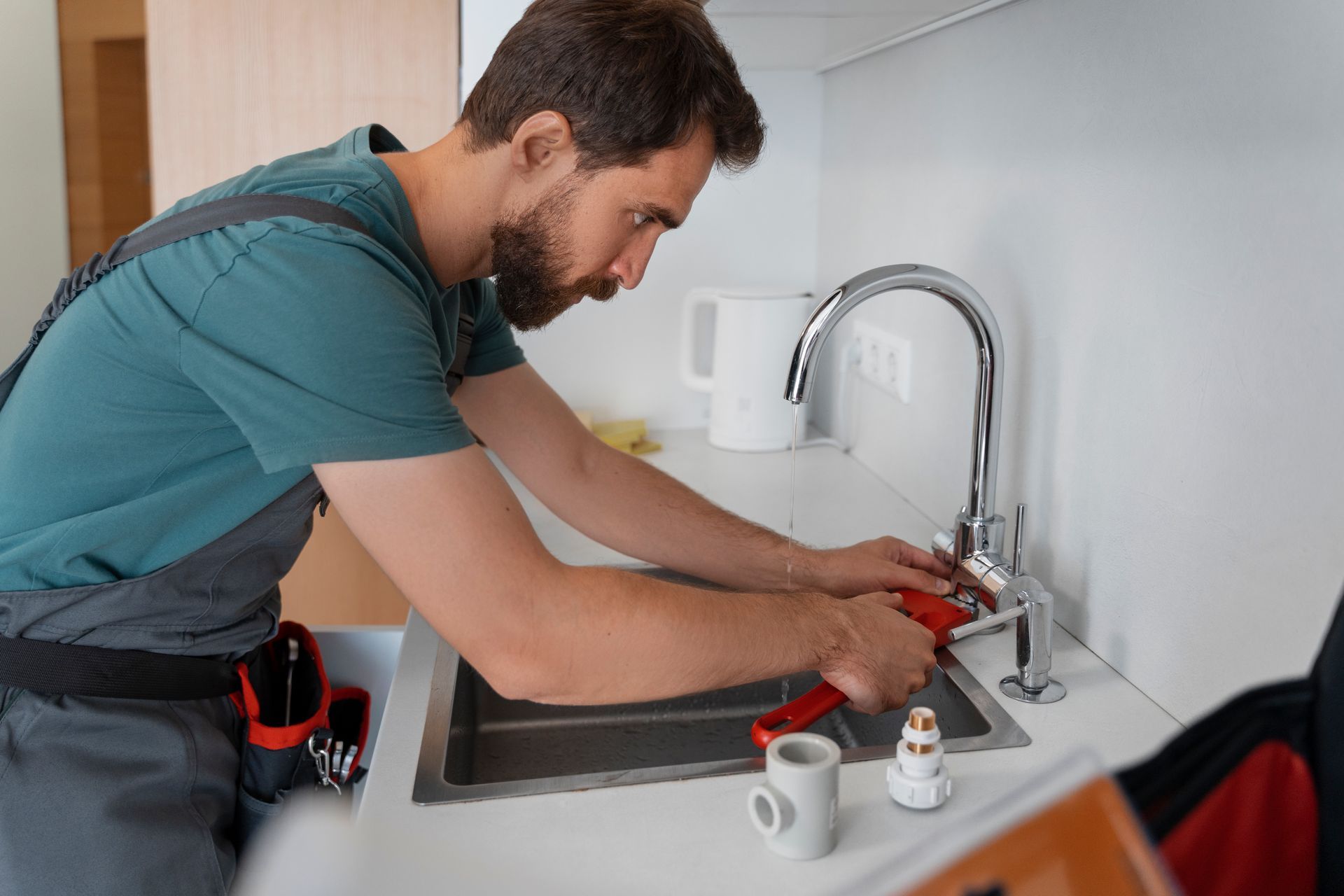The Benefits of Installing a Battery Backup for Your Sump Pump
Let’s be real—your sump pump is the unsung hero of your basement, quietly keeping water at bay every time it rains or the water table rises. It works tirelessly to divert water away from your home, saving you from the nightmare of a flooded basement. But here’s the kicker: your sump pump relies entirely on electricity to do its job. No power? No protection.
And guess what? The worst storms—the ones most likely to flood your basement—are also the ones that knock out your power. That’s right, when you need your sump pump the most, it’s sitting there like a fancy paperweight. Floods don’t wait for the lights to come back on, and neither should you. This is where a battery backup steps in to save the day (and your basement).
"What to Do If Your Sump Pump Stops Working"
Why You Need a Battery Backup for Your Sump Pump
Common Causes of Sump Pump Failures
Power outages (stormy weather loves to knock out power).
Storms and power outages go hand in hand, and when the electricity goes out, your sump pump stops working. It’s not just an inconvenience—it’s a disaster waiting to happen. Without power, your sump pump is as good as useless, leaving your basement wide open to flooding. And don’t think power outages are rare. The stronger the storm, the higher the chance you’ll lose power when you need your sump pump the most.
Mechanical breakdowns.
Even the best sump pumps aren’t immune to wear and tear. Over time, parts can fail, motors can burn out, and components can clog or jam. If you haven’t been keeping up with maintenance—or if your pump is simply old—it’s only a matter of time before it gives out. The problem? Most breakdowns don’t give you a heads-up. One day it’s fine, the next it’s leaving your basement to fend for itself against rising water.
Overwhelmed systems during heavy rain.
Some storms dump so much water that your sump pump just can’t keep up. If your system isn’t powerful enough or if your sump pit is undersized, water can overflow even while the pump is running. It’s like trying to bail out a sinking ship with a coffee mug—no matter how hard the pump works, it’s not enough. Without a backup system to take over, you’re looking at a flooded basement and a hefty repair bill.
Consequences of a Failing Sump Pump
Basement flooding: a financial and emotional nightmare.
A flooded basement isn’t just a mess; it’s a major financial hit. Cleaning up the water, repairing damage, and replacing ruined belongings can cost thousands. And that’s not even counting the emotional toll of watching your treasured keepsakes, furniture, or appliances get destroyed. It’s a headache no homeowner wants, yet it’s exactly what happens when your sump pump fails.
Water damage to foundation and belongings.
Flooding doesn’t just stay in the basement—it wreaks havoc on your home’s structure. Water seeping into your foundation weakens it over time, leading to cracks, instability, and expensive repairs. And let’s not forget about the belongings stored in your basement. From furniture to electronics, water doesn’t discriminate—it ruins everything in its path.
Mold and mildew growth (health hazard alert!).
When water sits in your basement, it creates the perfect breeding ground for mold and mildew. These aren’t just gross; they’re a serious health risk. Mold spores can trigger allergies, asthma, and other respiratory issues, especially for kids or anyone with a weakened immune system. The longer the water stays, the worse the problem gets, turning your basement into a damp, smelly, hazardous zone.
A battery backup for your sump pump isn’t just a luxury—it’s a necessity. It’s the fail-safe that keeps your home and your sanity intact when the unexpected happens.
The Lifesaving Benefits of a Battery Backup System
1. Works When the Power Goes Out
Let’s face it: power outages don’t ask for permission before shutting down your home’s critical systems. When the electricity goes off, your sump pump is completely powerless, leaving your basement exposed to rising water levels. This is where a battery backup comes in. With a reliable backup system in place, your sump pump can keep running smoothly, even when the rest of your home is in the dark. Whether it’s a short-term blackout or a storm-induced power outage lasting hours, the battery backup ensures uninterrupted protection. Think of it as a safety net that doesn’t let your basement become a swimming pool just because the grid failed you.
2. Peace of Mind During Storms
Stormy weather doesn’t just bring rain—it brings anxiety. Every time the sky darkens, you’re left wondering if your sump pump will hold up or if your basement will turn into a disaster zone. With a battery backup system, you can finally relax. You don’t need to constantly monitor your basement, check the weather app, or panic every time the lights flicker. The backup kicks in automatically, keeping your sump pump running without any intervention from you. Knowing your home is protected no matter what Mother Nature throws at you is a priceless kind of peace that every homeowner deserves.
3. Extends the Lifespan of Your Sump Pump
Emergency situations put a lot of strain on your sump pump. During storms, it’s working overtime to keep your basement dry, and that stress can lead to faster wear and tear. A battery backup doesn’t just take over during power outages—it also acts as a support system during peak performance times. By sharing the workload, it prevents your primary sump pump from overexerting itself and breaking down prematurely. This means fewer repairs, fewer replacements, and a longer life for the pump that protects your home. It’s like giving your sump pump a much-needed breather when it matters most.
4. Prevents Costly Repairs
Water damage is one of the most expensive issues a homeowner can face, and it all starts with a failing sump pump. When your basement floods, the repair bills pile up fast: water extraction, mold remediation, structural repairs, and replacing ruined belongings. Add in potential insurance premium hikes, and you’re looking at a nightmare scenario for your wallet. A battery backup system eliminates this risk by stepping in the moment your sump pump needs help. For a fraction of the cost of a major repair, you get a solution that keeps your basement dry and your finances intact.
5. Protects Your Health and Safety
A flooded basement doesn’t just harm your home—it endangers your health. Stagnant water creates the ideal environment for mold and mildew to thrive, and these unwelcome guests can cause serious respiratory problems. From asthma attacks to long-term lung damage, the health risks are real, especially for kids, the elderly, or anyone with pre-existing conditions. By preventing water from pooling in your basement, a battery backup system eliminates the breeding ground for mold before it even starts. It’s not just about protecting your home—it’s about protecting your family’s well-being and creating a safe, healthy living environment.
In short, a battery backup system is the ultimate safety net for your sump pump and your home. It doesn’t just work when things go wrong; it actively prevents problems before they spiral out of control. Peace of mind, financial savings, and long-term protection—what more could you ask for?
Types of Battery Backup Systems: Which One is Right for You?
When it comes to battery backup systems for your sump pump, not all options are created equal. Choosing the right one depends on your home’s needs, your budget, and how much peace of mind you’re looking for. Here’s a breakdown of the main types to help you make the best decision:
1.DC-Only Battery Backup Systems
This is your basic backup solution. A DC-only system works exclusively on battery power, kicking in only when your primary sump pump loses power. It’s ideal for homeowners who experience occasional power outages but don’t need their sump pump running around the clock. While this option is affordable and easy to install, it’s not designed to handle long-term outages or high water inflow. It’s a great choice if you’re on a budget and need a reliable backup for shorter outages.
2. Combination Sump Pump Systems
Think of this as a two-in-one powerhouse. A combination system integrates both a primary sump pump and a backup pump with its own battery. During normal operation, the primary pump does all the work. If it fails or the power goes out, the battery-powered backup pump automatically takes over. This system is perfect for homes with high water inflow or frequent storms, as it ensures continuous protection without any manual intervention. While it costs more upfront, the added reliability is worth every penny.
3. Inverter Systems
Inverter systems convert DC battery power into AC power, allowing your existing sump pump to run during an outage. Essentially, it’s like a generator but without the noise or need for fuel. The major advantage of this system is that you can keep using your current sump pump instead of installing a separate backup. However, inverters can be pricier and require a larger battery bank for extended use. This is a great option if you want seamless integration with your existing setup and need to handle extended outages.
4. High-Capacity Battery Backup Systems
For homeowners who deal with severe storms, heavy flooding, or long power outages, high-capacity systems are the gold standard. These systems come with larger batteries that last longer and can handle higher water inflow rates. They’re designed to protect your home during worst-case scenarios, offering peace of mind even in the most challenging conditions. While they require a bigger investment upfront, the security they provide is unmatched.
5. Smart Battery Backup Systems
Welcome to the future of sump pump protection. Smart battery backup systems come equipped with Wi-Fi connectivity and monitoring features, allowing you to track their performance in real time through a mobile app. Some models even send alerts if there’s a problem, so you’re never caught off guard. While they’re the most expensive option, they’re perfect for tech-savvy homeowners who want total control and advanced features.
Signs You Should Invest in a Battery Backup ASAP
- You live in an area prone to frequent power outages.
- Storms leave you anxious about basement flooding.
- Your sump pump struggles to keep up during heavy rains.
- You've dealt with basement flooding before (never again!).
- Mold and mildew are recurring issues in your home.
- Your sump pump is aging and prone to failure.
- You want peace of mind knowing your home is protected.
- Flood damage has cost you money—or sleepless nights.
- Your neighborhood has poor drainage or high water tables.
- You’d rather prevent a disaster than clean up after one.
Professional Installation: Why DIY Isn’t the Best Idea
Installing a battery backup system might sound like a straightforward weekend project, but the reality is far from it. Here’s why leaving it to the pros is your safest bet:
1. Expertise Matters
Professional plumbers have the training and experience to install your battery backup system correctly the first time. They understand the intricacies of sump pump systems, wiring, and waterproofing, ensuring there are no costly mistakes that could leave you vulnerable during a storm.
2. Compatibility Check
Not all battery backup systems work seamlessly with every sump pump. A professional will assess your current setup and recommend the best system for your specific needs. They’ll ensure the backup integrates perfectly with your existing pump, so you’re not stuck with compatibility issues.
3. Safety First
DIY installations can be risky, especially when dealing with electrical components and water systems. A professional ensures that the installation meets safety standards, avoiding potential hazards like electrical shorts, leaks, or system malfunctions.
4. Saves Time and Stress
Let’s be honest—DIY projects often take longer than expected, especially when you’re navigating unfamiliar territory. A professional can get the job done quickly and efficiently, saving you the hassle and giving you peace of mind that it’s done right.
5. Warranty Protection
Many manufacturers require professional installation to maintain the warranty on their products. DIY mistakes could void the warranty, leaving you to foot the bill for any repairs or replacements. A professional installation keeps your warranty intact and your investment protected.
6. Future-Proofing
A professional doesn’t just install the backup—they also optimize your sump pump system for long-term performance. They’ll ensure everything is running smoothly, reducing the chances of future breakdowns and giving you the confidence that your home is protected for years to come.
DIY might be tempting, but when it comes to something as critical as protecting your home from water damage, it’s better to trust the experts. Investing in professional installation now can save you from bigger headaches—and expenses—later.
Take Action Before It’s Too Late!
Don’t wait for a flooded basement to remind you how vital a battery backup system is. Whether it’s a sudden power outage, heavy rainfall, or an aging sump pump, disasters strike when you least expect them. A small investment in a battery backup today can save you thousands in water damage repairs, mold remediation, and emotional stress tomorrow.
Take control of your home’s safety and protect your family’s well-being. Call All City Plumbers now to schedule a professional installation and ensure your sump pump is always ready to go, no matter what Mother Nature throws your way. The peace of mind you’ll gain? Priceless.
Your home deserves the best protection—don’t put it off. Let’s make sure you’re covered before it’s too late!
